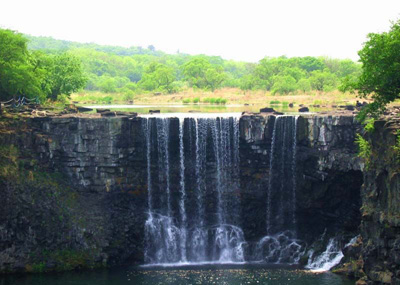| Home / Environment / Ecology and China | Tools: Save | Print | E-mail | Most Read |
| Jingpo Lake: More Than Natural Scenery |
| Adjust font size: |
Located in Ning'an County near the city of Mudanjiang in northeast China's Heilongjiang Province, Jingpo Lake is one of the country's key scenic spots and a world geopark, attracting a huge number of tourists every year. Rocks from a volcanic eruption 10,000 years ago blocked the lake, originally a branch of the Mudan River.
With an area of 90.3 square kilometers, Jingpo Lake is China's largest barrier lake. It is 353 meters above sea level, with an average depth of 40 meters. Surrounded by green mountains, the lake is divided into four water areas, the North Lake, the Central Lake, the South Lake and the Upper Lake, with many harbors, waterfalls and islands. In September, Jingpo Lake was evaluated by the United Nations Educational, Scientific and Cultural Organization (UNESCO) and became a world geopark. Environment The lake features a temperate continental climate, with four distinctive seasons. It has a windy and dry spring, a humid and cool summer, a short and sunny autumn, and a long and cold winter. The yearly average temperature is 3.6 degrees centigrade. The lake area has more than 30 rivers and streams, all of which are branches of the Mudan River that flows into the Songhua River. The lake is surrounded by dense forests, with forest coverage of 68 per cent and an area of 902.89 square kilometers. The forests around the lake have more than 110 species of plants, including coniferous and broadleaf trees. The dense forests and remote mountains provide ideal habitats for wild animals and plants. The lake area has more than 50 kinds of wild animals, 40 kinds of fish and 500 kinds of wild birds. Natural and humanistic landscape Diaoshuilou Waterfall, which resembles the Niagara Waterfall in North America, is located at the northern end of Jingpo Lake. It is more than 40 meters wide and has a vertical fall of 12 meters. In the rainy season, the width extends to more than 200 meters. Besides the breathtaking scenery, Jingpo Lake is also rich in cultural assets. Xinglong Temple, first built during the reign of the third kings of the Bohai Kingdom (737-793), is an ancient Buddhist temple with a history of more than 1,200 years. The temple has three pieces of national treasure: a stone Buddha, a stone lamppost and a stone tortoise, all with a great historical research value. During the Anti-Japanese War (1937-1945), the Northeast China Allied Forces fought the Japanese invaders in the lake area.
(China Daily November 24, 2006)
|
| Tools: Save | Print | E-mail | Most Read |
 |
| Related Stories |
|
||


